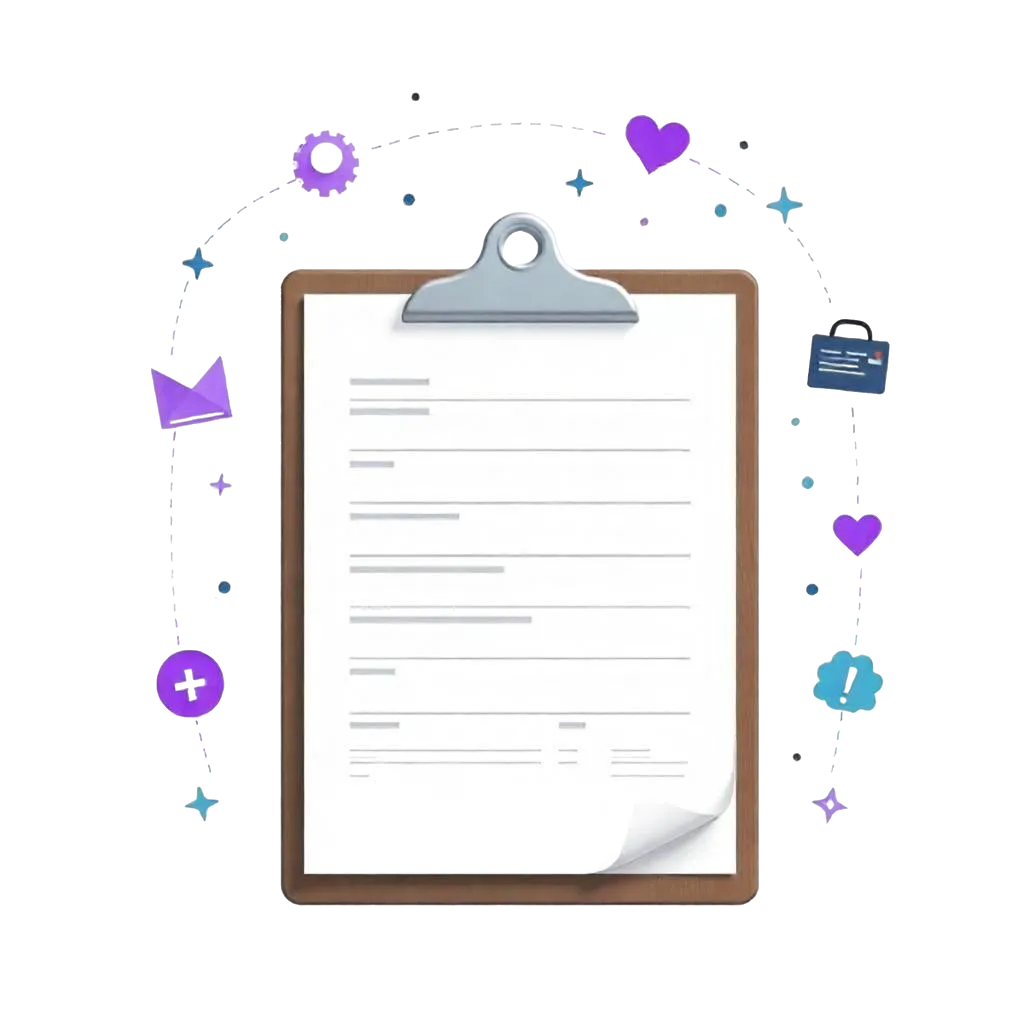Electronic Remittance Advice (ERA) is transforming the way healthcare organizations manage their financial transactions. According to the Centers for Medicare & Medicaid Services (CMS), ERAs streamline the claims processing and payment reconciliation process, significantly improving efficiency.
These electronic documents are essential for accurate financial reporting and compliance with regulatory standards like HIPAA. In this comprehensive guide, we will delve into the key components, benefits, and specifications of ERAs.
We will also explore case studies that highlight how healthcare providers leverage ERAs to enhance revenue cycle management. Let’s unlock the potential of Electronic Remittance Advice together.
Understanding Electronic Remittance Advice (ERA)
Electronic Remittance Advice (ERA) is essential in the digitalization of healthcare payments. This form of communication is critical for efficient financial management within healthcare institutions.
An ERA is a digital document sent by a payer to a healthcare provider. It details the payment and adjustment information related to a healthcare claim.
The adoption of ERA has been spurred by the shift towards electronic healthcare practices. It aligns with the broader goal of streamlining healthcare operations for better accuracy and speed.
Understanding ERA is vital for anyone involved in healthcare finance. It provides transparency and reduces manual errors associated with paper-based systems.
Here is a quick overview of what ERA entails:
- Contains detailed payment information: Lists payments, adjustments, and reasons for claims processing.
- Enables faster processing: Reduces delays associated with mailing and handling paper-based documents.
- Improves accuracy: Minimizes errors found in manual data entry processes.
Learning how ERA fits into healthcare payment processes can enhance your capability to manage financial workflows. Now, let's explore the definition of ERA and its specific roles.
Definition and Role in Healthcare Payment Processing
An Electronic Remittance Advice (ERA) is a document that provides information about a healthcare claim's payment. It includes details about paid amounts, adjustments, and any denials.
In healthcare payment processing, ERA serves an important role. It provides providers with detailed breakdowns of payments and adjustments, facilitating accurate reconciliation of claims.
ERAs play a pivotal role in ensuring healthcare payment transparency. They offer quick access to detailed transaction data, crucial for managing finances efficiently.
ERA vs. Traditional Paper-Based Remittance Advice
In the past, healthcare payments relied on paper-based remittance advice. These paper documents provided similar information to ERAs, but with more limitations.
Traditional paper-based systems involve manual data entry, which often leads to errors. They also require more time for delivery and processing, delaying financial workflows.
ERAs, however, overcome these shortcomings. They are delivered electronically, ensuring swift and accurate financial transactions. This modernization offers a significant improvement in efficiency and reliability over paper-based systems.
The Benefits of Electronic Remittance Advice
Electronic Remittance Advice (ERA) offers several advantages over traditional methods. These benefits impact healthcare providers, payers, and even patients.
Firstly, ERAs streamline financial processes, reducing the need for manual interventions. This automation leads to more accurate payment records and faster transaction times.
The digital nature of ERAs minimizes the risk of human error. With less manual handling, providers can ensure more precise reimbursement tracking.
A key advantage is improved communication between healthcare providers and payers. ERAs deliver detailed feedback on claims, aiding in swift issue resolution.
Moreover, ERAs contribute to better cash flow management. Prompt electronic notifications enable quicker fund transfers, enhancing financial stability for healthcare institutions.
Here are some overarching benefits of ERA:
- Reduces administrative overhead
- Increases efficiency in the billing cycle
- Enhances accuracy and transparency
- Facilitates faster payment cycles
- Improves record-keeping and audit trails
For Healthcare Providers
Healthcare providers experience significant gains from ERAs. One notable benefit is the reduction in paperwork. This allows staff to focus on patient care instead of administrative tasks.
ERAs also provide real-time access to payment details. This accelerates the reconciliation process, making it less burdensome for billing departments.
Furthermore, ERAs help in quickly identifying discrepancies or issues in claims. Providers can address these errors promptly, thus increasing the chances of timely and full reimbursements.
For Payers and Patients
Payers, including insurance companies, also experience positive impacts. ERAs facilitate a more efficient claims processing workflow, reducing administrative costs.
Timely electronic updates help payers manage their cash flows more effectively. They can process a larger volume of transactions with increased accuracy and speed.
For patients, the benefits of ERA come through clarity and transparency. They gain a clearer understanding of what services are paid for and any remaining out-of-pocket expenses. This transparency fosters trust and enhances satisfaction with the healthcare experience.
Key Components of an ERA
An Electronic Remittance Advice (ERA) is a complex document. Understanding its components is crucial for all users. An ERA contains critical financial information that aids in processing healthcare payments.
Several key elements make up an ERA. Among these are the payment amount, the patient’s details, and provider information. These details ensure transparency and accuracy in transactions.
Another vital component is the transaction control number. This unique identifier ensures that each transaction is traceable and accountable. It's crucial for audits and dispute resolutions.
ERAs also highlight adjustments and denials. These are essential for understanding any variations in the expected payment. Such insights allow providers to address and rectify issues promptly.
Key information typically found in an ERA includes:
- Provider identification
- Patient details and service dates
- Explanation of Benefits (EOB)
- Adjustment and denial codes
- Unique transaction identifier
Understanding the 835 Transaction Standard
The 835 transaction standard is a cornerstone of the ERA system. This standard, maintained by ANSI, guides the electronic exchange of payment information. It ensures consistency across transactions, promoting seamless processing.
The 835 standard outlines specific data formats. These formats facilitate uniformity in how ERAs are structured and transmitted. This standardization is especially beneficial for healthcare providers handling multiple payers.
By adhering to the 835 standard, ERAs become easier to interpret. Stakeholders can swiftly process payment information without encountering format discrepancies. This universality enhances efficiency and reduces administrative burdens.
Common ERA Codes and Their Meanings
ERA documents use specific codes to convey detailed financial information. These codes specify payment adjustments, denials, and reasons for non-payment. Each code has a standardized meaning, ensuring clarity in transactions.
Understanding these codes is vital for accurate financial operations. They help identify issues within transactions. For instance, a specific code might indicate a denial due to incomplete patient information, prompting immediate corrective action.
Setting Up and Choosing an ERA Vendor
Selecting the right Electronic Remittance Advice (ERA) vendor is a pivotal decision. This choice can significantly impact efficiency and compliance in healthcare payment processes. Understanding vendor features is essential for making an informed decision.
When evaluating vendors, consider their track record and experience. An established vendor offers reliability and proven solutions. Ensure they have a history of working with similar healthcare institutions to yours.
Compatibility with existing systems is another critical factor. The ERA vendor should seamlessly integrate with your current healthcare management systems. This reduces disruptions and ensures smooth implementation.
Cost is always a consideration. Evaluate the pricing model and ensure it aligns with your budget. However, prioritize quality and service over cheap options to avoid costly issues later.
Essential factors to consider include:
- Vendor's experience and expertise
- Integration capabilities with current systems
- Cost vs. value delivered
- Customer support and service
- User reviews and testimonials
The Selection Process
The vendor selection process involves several strategic steps. Start by defining the specific needs of your healthcare institution. Clear requirements help in narrowing down potential vendors effectively.
Research is crucial. Conduct a thorough review of different vendors. Consider seeking recommendations from industry peers or professional networks. This can provide insights into vendors' reputation and service quality.
Arrange demonstrations and presentations from shortlisted vendors. This gives a practical understanding of their software and support services. Also, an open dialogue about needs and expectations during these sessions is invaluable.
Compliance and HIPAA Considerations
Compliance is paramount when choosing an ERA vendor. The vendor must adhere to all relevant regulations, including HIPAA. This ensures the protection of sensitive patient information during transactions.
Verify the vendor’s commitment to security and privacy standards. Ensure they have robust mechanisms to safeguard data. A vendor's proven compliance track record provides peace of mind and safeguards against potential regulatory issues.
ERA and the Revenue Cycle Management
Electronic Remittance Advice (ERA) plays a vital role in revenue cycle management within healthcare institutions. It enhances the efficiency of financial transactions and ensures transparency across billing processes. By streamlining these processes, ERA supports timely payment management.
One of the core benefits is improved cash flow. With quicker remittance advice processing, healthcare providers can expedite claim payments. This rapid processing reduces waiting periods and enhances financial stability.
ERA also offers comprehensive data and detailed payment information. It provides insights into claim approvals, denials, and adjustments. This data is crucial for decision-making and enhances operational efficiency within healthcare organizations.
Moreover, ERA reduces the administrative burden. It minimizes paperwork, thereby lowering the risk of errors and omissions. This reduction in manual tasks allows staff to focus on more strategic activities, improving productivity.
Key benefits of ERA in revenue cycle management include:
- Enhanced cash flow and liquidity
- Improved billing transparency
- Reduction in administrative workload
- Access to detailed financial data
Impact on Billing and Reimbursement
The impact of ERA on billing and reimbursement is profound. It ensures timely and accurate billing information, crucial for revenue management. The automation of remittance advice reduces the likelihood of billing errors.
Furthermore, ERA enhances claim processing accuracy. Healthcare providers receive immediate notifications of payment statuses. This immediacy allows for quick resolution of any claim discrepancies, increasing reimbursement rates.
Additionally, ERA aids in minimizing claim denials. By identifying reasons for denials promptly, providers can address issues before resubmission. This proactive approach reduces the time and resources spent on claim follow-ups.
Overall, ERA's influence on billing practices makes it an essential component in modern healthcare revenue management. By improving accuracy and reducing delays, it creates a smoother financial operation.
Auditing and Reconciliation Processes
ERA simplifies auditing and reconciliation in healthcare. With detailed electronic records, audits become more efficient and less time-consuming. The clarity of ERA data aids in verifying the accuracy of financial transactions.
Reconciliation is streamlined with ERA, providing detailed breakdowns of payments. This ensures that all received funds match recorded claims accurately. As a result, healthcare providers can maintain accurate financial records effortlessly, ensuring regulatory compliance.
Implementing ERA in Healthcare Institutions
Implementing Electronic Remittance Advice (ERA) in healthcare institutions requires a strategic approach. Transitioning from paper-based systems to electronic solutions involves planning and coordination. The goal is to ensure a smooth integration into existing processes.
Initially, institutions must assess their current infrastructure. Understanding the technological requirements for ERA is essential. This includes evaluating software needs and the capacity for data storage and security.
Next, engaging with a reliable ERA vendor is crucial. Institutions should focus on finding a vendor that aligns with their needs. Evaluating vendor solutions for scalability and support ensures long-term success.
Communication with stakeholders is also important. Providers, payers, and staff should be informed and involved throughout the implementation. This ensures alignment and addresses any concerns or resistance.
Key factors for implementing ERA include:
- Assessment of existing infrastructure
- Selection of a suitable vendor
- Stakeholder engagement and communication
- Focus on data security and compliance
Steps for Transitioning from Paper to Electronic
The transition from paper to electronic remittance advice begins with strategic planning. Institutions should start by setting clear objectives and goals. These objectives guide the transition and measure its success.
A critical step is evaluating the current paper-based system. Understanding existing workflows helps identify areas for improvement. This evaluation informs the design of an effective electronic system.
Gradually introduce the electronic system alongside paper processes. This phased approach reduces disruptions and allows for adjustments. Monitoring the transition closely ensures that any issues are addressed promptly. Ultimately, the goal is to fully integrate ERA, creating a seamless billing environment. Additionally, leveraging application modernization services can help upgrade legacy systems, ensuring smooth integration of new electronic processes.
Training and Staff Adaptation
Training is essential for successful ERA implementation. Staff need to understand new processes and technologies. Comprehensive training programs ensure smooth adaptation and efficiency. It is important to provide ongoing support to address challenges. This support helps staff transition comfortably, fostering acceptance and skill retention.
Additionally, adapting to ERA requires changes in mindset. Encouraging staff to embrace digital solutions is crucial. This cultural shift can lead to improved adoption rates and success. Over time, staff become more proficient, enhancing overall institutional performance.
The Future of ERA in Healthcare
The future of Electronic Remittance Advice (ERA) in healthcare is promising. With evolving technologies, ERA systems are set to become more efficient and user-friendly. These advancements will significantly impact healthcare administration by streamlining financial transactions.
As new technologies emerge, institutions can expect quicker processing times. This efficiency will enhance overall satisfaction among healthcare providers and patients. Future systems are likely to offer improved data analytics, aiding in strategic decision-making.
Additionally, the future of ERA is closely tied to interoperability. As healthcare systems become more interconnected, seamless data exchange will be crucial. This connectivity will promote coordinated care and improve patient outcomes.
Key trends shaping the future of ERA include:
- Enhanced data analytics
- Increased interoperability
- User-friendly interfaces
- Improved processing speeds
Technological Advancements and Trends
Technological advancements are driving the evolution of ERA systems. Machine learning and artificial intelligence may soon play a role. These technologies can optimize data processing and error detection.
Cloud-based solutions will enhance data storage and access capabilities. This will make ERA systems more flexible and scalable. Such advancements are expected to improve the overall efficiency of healthcare institutions.
Policy Implications and Healthcare Reform
Policy changes also influence the future of ERA. Regulatory bodies are focusing on data privacy and security. Complying with new regulations will be essential for all healthcare institutions.
Healthcare reform initiatives aim to improve payment systems. ERA plays a crucial role in supporting these efforts. By aligning with policy developments, ERA can contribute to a more transparent and efficient healthcare sector.
Conclusion
Electronic Remittance Advice (ERA) is a vital component in modern healthcare. It streamlines financial transactions and enhances efficiency. By reducing administrative burdens, ERA allows healthcare providers to focus more on patient care.
Understanding ERA is crucial for healthcare stakeholders. It ensures compliance and optimizes revenue cycles. With technological advancements and policy shifts, the role of ERA will only expand. Embracing this technology will pave the way for a more efficient and transparent healthcare system.
Reduce costs and improve your reimbursement rate with a modern, all-in-one clinic management software.
Get a DemoLegal Disclosure:- Comparative information presented reflects our records as of Nov 2025. Product features, pricing, and availability for both our products and competitors' offerings may change over time. Statements about competitors are based on publicly available information, market research, and customer feedback; supporting documentation and sources are available upon request. Performance metrics and customer outcomes represent reported experiences that may vary based on facility configuration, existing workflows, staff adoption, and payer mix. We recommend conducting your own due diligence and verifying current features, pricing, and capabilities directly with each vendor when making software evaluation decisions. This content is for informational purposes only and does not constitute legal, financial, or business advice.










